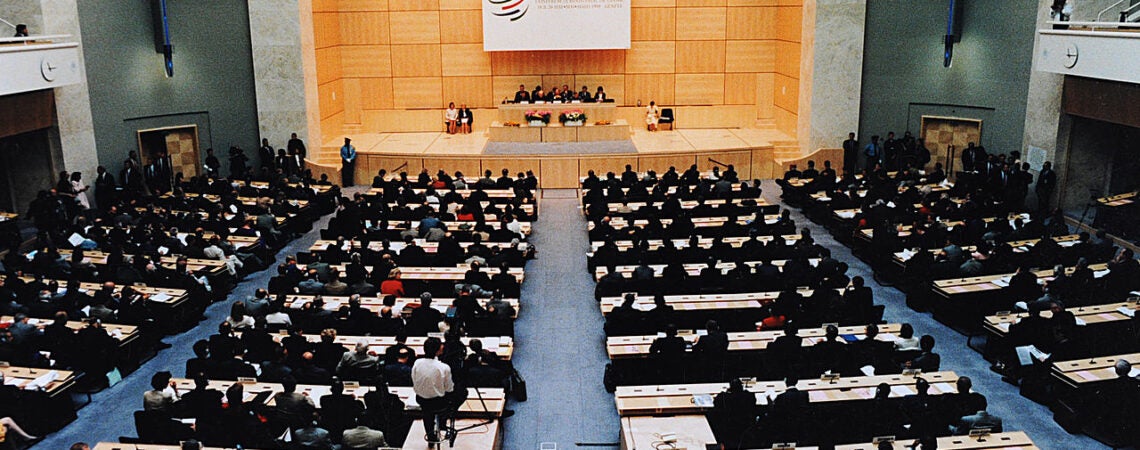The rules-based multilateral trading system established under the General Agreement on Tariffs and Trade (GATT) and its successor, the World Trade Organization (WTO) is based on two pillars constraining exercise of bargaining power: reciprocity where member countries seek a balance of tariff concessions in trade negotiations, and nondiscrimination through the mostfavored nation (MFN) principle (Jackson, 1989). These rules, along with the argument GATT/WTO has ensured resolution of a terms-of-trade prisoners’ dilemma (Bagwell & Staiger, 1999, 2002), have resulted in progressive reduction of tariffs in the post-war period (Baldwin, 2016) and a substantial increase in the global volume of trade (Subramanian & Wei, 2007).
Recently, Mattoo and Staiger (2020) have interpreted the trade war between the United States and China as the former switching from a “rules-based” to a “power-based” approach to trade negotiations, targeting higher “bargaining” tariffs at a country with which it has consistently run a bilateral trade deficit. This switch in trade policy emphasis has been driven by several other well-documented concerns the United States has about its trade relations with China, including the latter’s higher average bound tariffs, manipulation of its exchange rate, and its violation of WTO rules (Morrison, 2018). A key component of this “power-based” approach is the United States has also disabled the dispute settlement system of the WTO by paralyzing its Appellate Body (AB) (Pauwelyn, 2019).
Superficially, “power-based” bargaining has worked: in signing the US–China Phase One Trade Agreement (USCTA) on January 15, 2020 (Office of the United States Trade Representative [USTR], 2020), China committed to a voluntary import expansion (VIE) over 2017 baseline levels, implying a combined $200 billion worth of additional imports of US products (agricultural, manufactured, and energy) and services for the 2-year period, January 1, 2020, through December 31, 2021 (Bown, 2021c). China’s imports of US manufactured and agricultural products reached 60% and 64%, respectively, of their commitment for 2020, and through October 2021, they had reached 63% and 89% respectively of the year-to-date target(s) (Bown, 2021c).
However, the apparent success of “power-based” bargaining in bringing China to the trade negotiating table comes at considerable actual and potential cost and does not substantively contribute to resolution of a fundamental problem facing the WTO: how to deal with China’s current economic model. To paraphrase the prescient testimony of former AB member Jennifer Hillman to the US-China Economic and Review Security Commission in 2018, the United States has not avoided “…a narrow, deficit-focused bilateral deal…” (Hillman, 2018, 2). To develop this argument, the current article consists of three key parts.
The United States' power-based bargaining and the WTO- Has anything really been gained?To read the full report from the Agricultural & Applied Economics Association, please click here.


